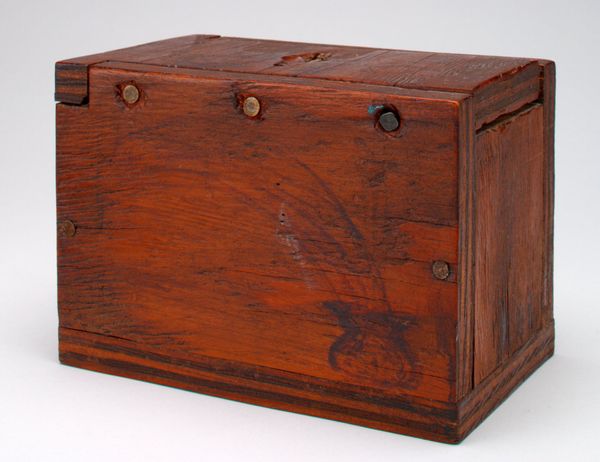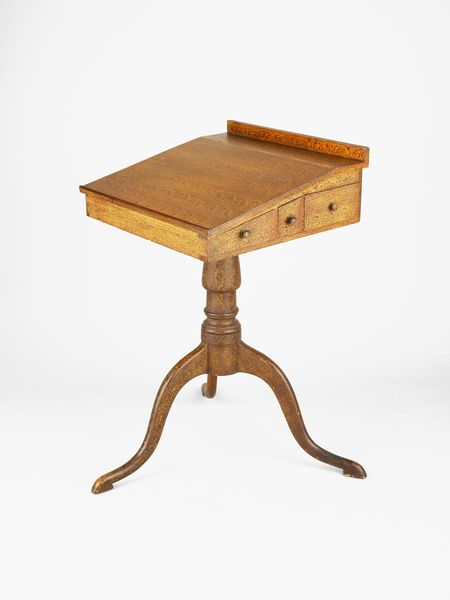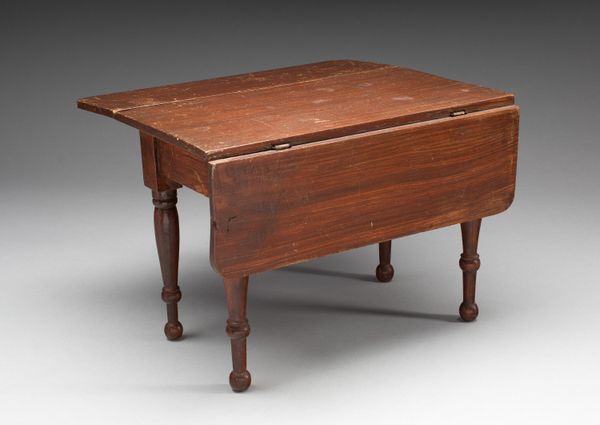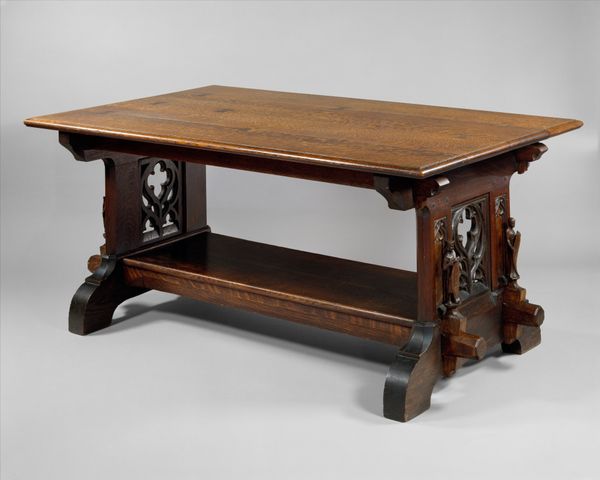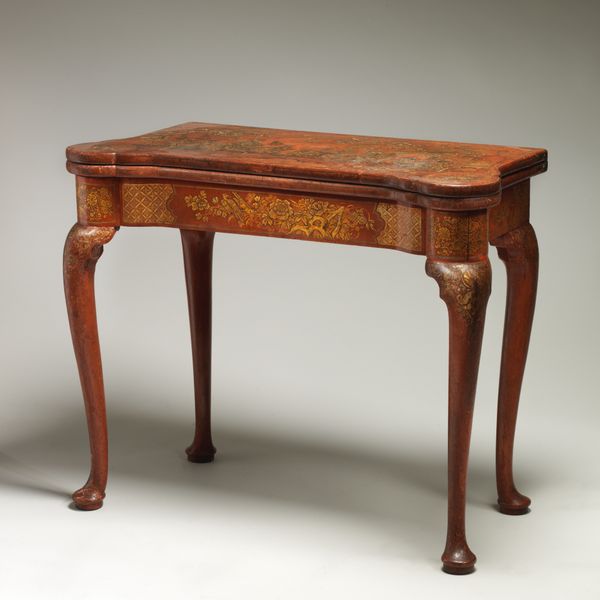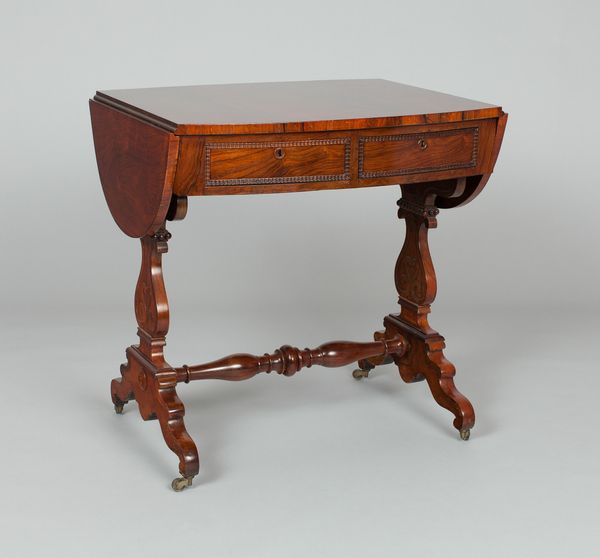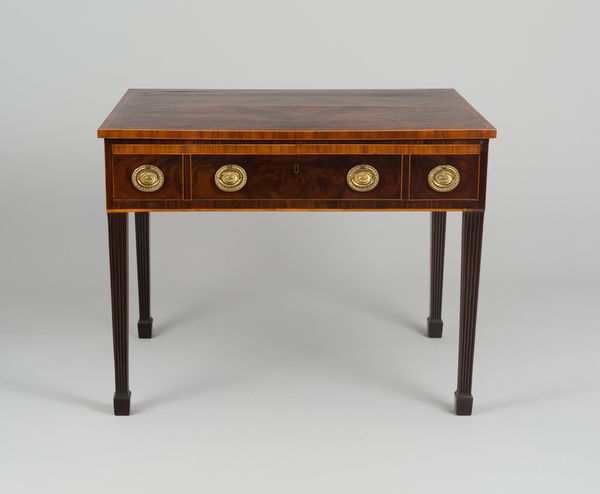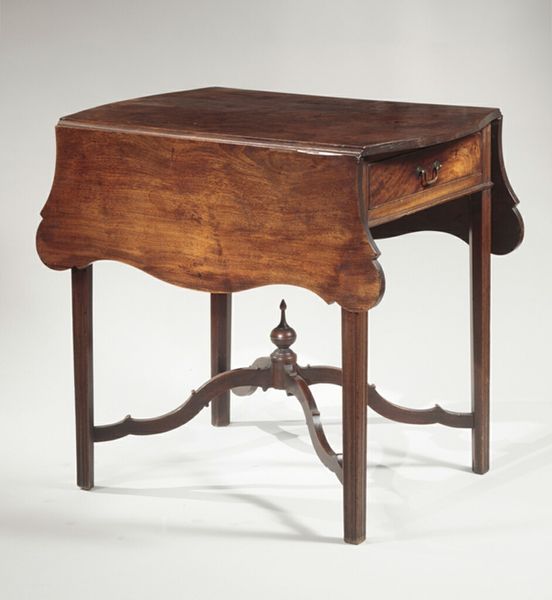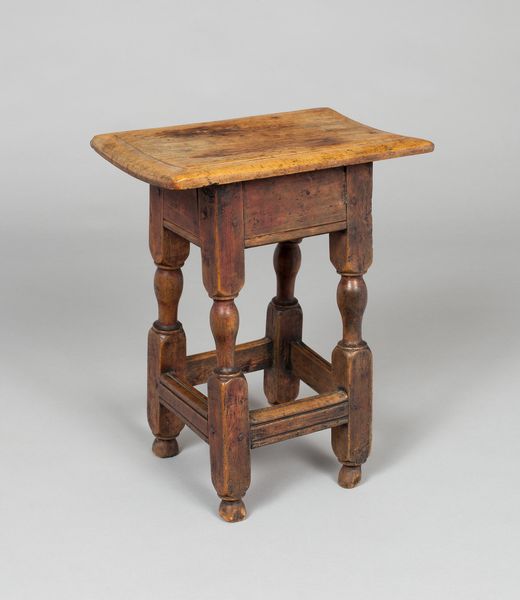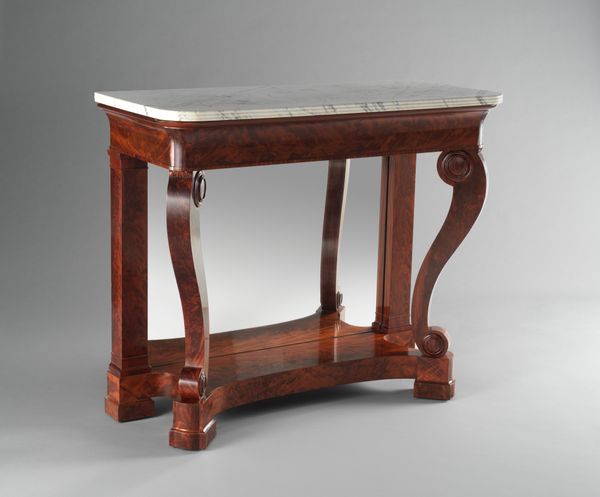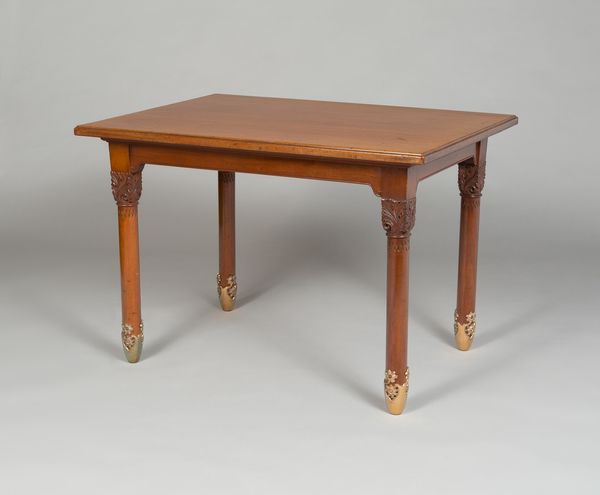
carving, sculpture, wood
#
carving
#
folk-art
#
sculpture
#
wood
Dimensions: 5 3/16 x 7 1/16 x 4 1/8 in. (13.18 x 17.94 x 10.48 cm)
Copyright: Public Domain
Editor: This wooden "Drop-leaf table still bank," from the late 19th or early 20th century, has an appealingly naive quality to it. It reminds me of something you'd find in a child's playroom. What do you notice when you look at this object? Curator: Primarily, I am drawn to the articulation of form. Observe the simple geometry, how rectangular planes are subtly interrupted by the rounded protrusions of the dark hardware. Notice, too, the proportional relationships. How do the robust legs contrast with the delicate tabletop overhang? Editor: The proportions are interesting! And what about the inscription? "Wilson" is faintly visible. Does that play into your formal analysis? Curator: It provides another layer. The inscription disrupts the surface and invites a consideration of intentionality versus happenstance. Is this a purposeful declaration or simply an act of accidental defacement? Moreover, it activates the concept of the palimpsest: the idea of layers accumulating across time, visible now to the contemporary viewer. Consider the tension between this hand-carved inscription, the commercially manufactured fasteners, and the hand-applied varnish. How might these material tensions signify larger aesthetic concerns? Editor: I see what you mean about the layers. So, it's not just a simple object; it's a complex interplay of form, surface, and implied history. Curator: Precisely. Formalism allows us to see beyond mere representation, inviting deeper aesthetic contemplation. Editor: Thanks! I hadn’t thought about analyzing something so utilitarian this way.
Comments
No comments
Be the first to comment and join the conversation on the ultimate creative platform.
